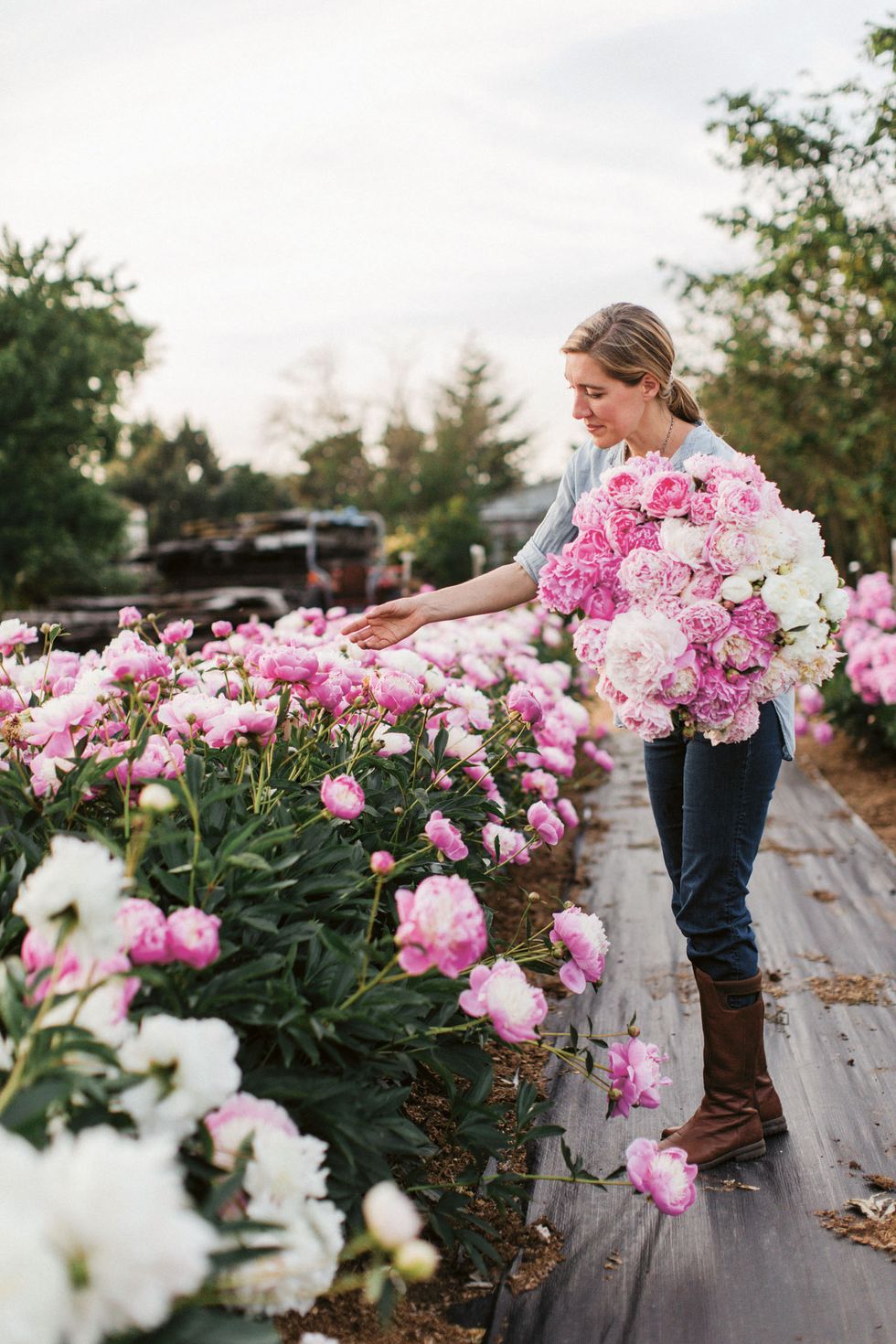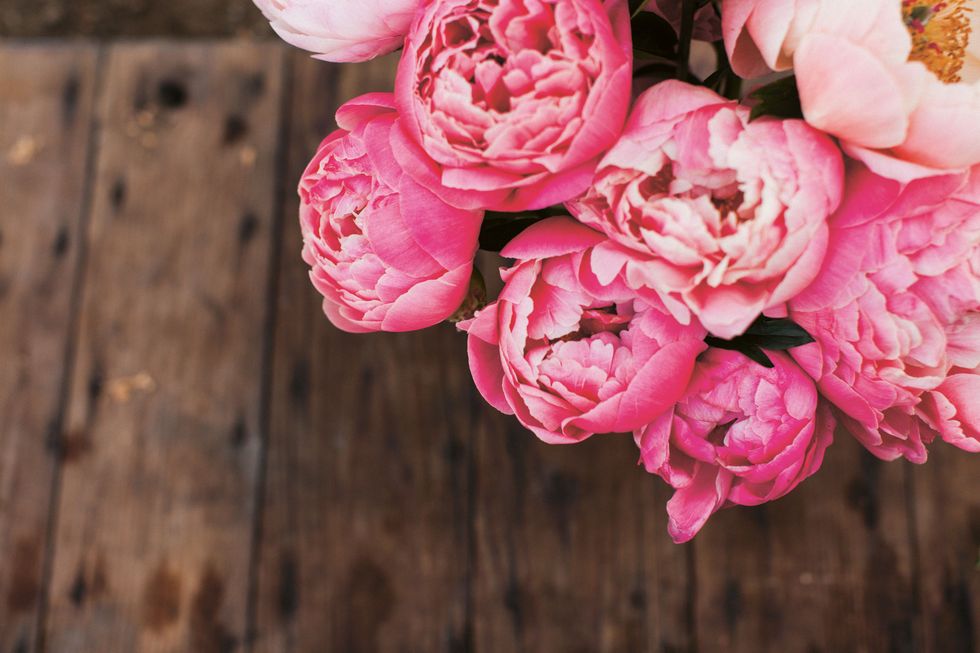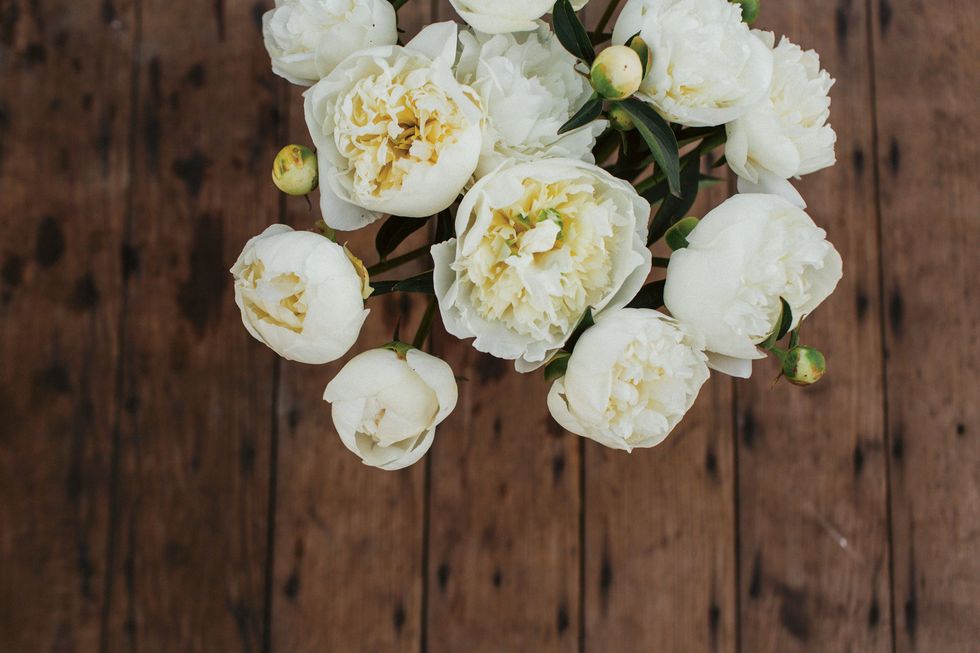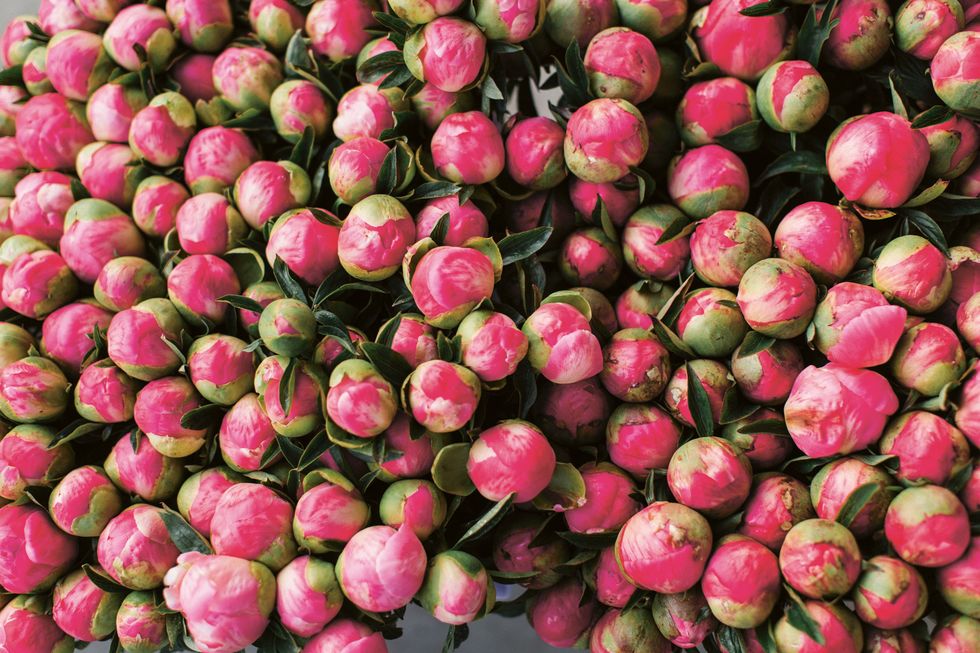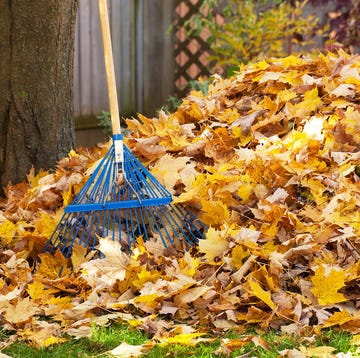Erin Benzakein is the flower farmer and entrepreneur behind Floret Farm in Washington's Skagit Valley. There, she grows, teaches, and shares the beauty of flowers with people from around the world, all while being a leader in the "field-to-vase" movement. In her new book Cut Flower Grow she details growing and harvesting instructions for beautiful blooms, including one of her favorites—peonies. The following is an excerpt.
Few flowers can contend with the ultimate queen of spring, the peony. Their large flower heads and billowy, ruffled blooms come in a dizzying array of pinks, corals, cranberries, whites, yellows, and reds. Many carry a sweet fragrance, and most are long-lasting in the vase. It's no wonder they're our most requested flowers for weddings and special events.
In addition to being hugely popular and excelling in the vase, peonies are also very easy to grow. They are separated into two different groups: herbaceous and tree peonies. The first group is the most commonly grown in gardens. Plants are easy to obtain, thrive in nearly every climate, and can live for over 100 years if cared for properly. Foliage emerges in early spring, and flowers are borne on the new season's growth. In late autumn, the foliage dies back to the ground. It's best to wait 2 to 3 years before harvesting from a newly planted peony; otherwise, you may affect its future growth. It's difficult to resist the urge to pick flowers during this time, but the payoff will be a fully mature plant that will reward you with years of blooms.
How to Grow Peonies
Once established, peonies will flower abundantly for many years. Potted specimens can be purchased and planted in the spring, but the best results will come from bare-root stock that is dug and shipped dormant in the fall. These roots should be planted immediately so that they can start to establish before the cold of winter sets in.
Peonies prefer full sun, and you should give them at least six hours of uninterrupted bright daylight. Most soil types are fine, but standing water can be problematic, so be sure to find a spot that has good drainage.
Dig a hole two to three times as wide as the root, and amend the soil with a generous dose of well-rotted manure or compost and a phosphate-rich fertilizer such as bonemeal. Pay special attention to planting depth— if roots are planted too deeply they won't flower properly, so nestle the roots just below the soil surface. These plants will grow large over time, so space them at least 3 feet (1 m) apart.
In the spring, before the foliage has emerged, top-dress the soil with sprinkle of bonemeal and a light mulch of compost, 2 inches (5 cm) deep. This will feed the new growth during the coming season.
Double-flowered types need extra staking to keep their flower heads supported under the weight of the massive blooms. Heavy spring rains can flatten a patch in a matter of minutes, so be sure to provide support early on.
If needed, in autumn, divide any mature plants that have become crowded or aren't producing well (this will happen after 8 to 10 years). Once the foliage has died to the ground, take a pitchfork, loosen the soil around the plants, and lift them out. Gently wash the roots clean of dirt so that their eyes (small, swollen red buds that will become next year's flowering stems) are visible, then split the roots apart with a sharp knife. Make sure each root has at least 3 eyes attached, and replant elsewhere in the garden.
The most problematic disease for peonies is called botrytis, and it's most common during wet spring weather. Proper plant spacing and good airflow will help, but sanitation is the real key to prevention. Monitor plants during the spring for signs of disease (including blackened, burned-looking leaves) and remove any infected foliage. Botrytis spreads rapidly, so be sure to toss the infected leaves in the garbage, not the compost. In the autumn, remove all dead foliage and instead of composting it, throw it in the trash or onto the burn pile.
Favorite Peony Varieties
Peonies come in a beautiful rainbow of pastel colors, and their flower forms vary from huge crinkled doubles to fringed singles, and everything in between.
Bowl of Beauty
A unique variety with rose-pink outer petals surrounding a fluffy, creamcolored center.
Coral Charm
One of the first to flower, this vigorous, large-headed variety comes in a warm peachy-coral blend that fades as it opens. Because of its size, stake plants early. This is one of the most popular varieties on the farm.
Duchesse De Nemours
This creamywhite, highly fragrant double variety has large domed blooms that glow the softest shade of yellow when fully open. This is my all-time favorite white peony.
Raspberry Sundae
The name is perfectly fitting for this novelty variety that sports massive, ultraruffled pink flower heads that sit atop a lovely cup of wide-flaring creamy petals. To me, it looks like a big scoop of vanilla ice cream dripping with raspberry jam. It is a wonderful cut flower with a sweet, mild fragrance.
How to Make Cut Peonies Last Longer
Peonies make wonderful, long-lasting cut flowers that generally persist for over a week. You can pick them as open as you like, but for the best vase life, harvest them while in bud. I aim for harvesting at the "soft marshmallow" stage—in the mornings I go through the plants and gently squeeze each flower bud, feeling for sponginess. If buds are still hard, then I leave them to ripen longer, but if they feel soft—similar to a marshmallow— I pick them. When harvesting, be sure to leave at least two sets of leaves on the stem so that the plant can continue to grow and store food over the summer.
Cut stems can also be stored for later use; they will last for two to three weeks in the refrigerator. When storing, remove almost all of the leaves; bunch the stems together and slip them into a plastic bag with a few paper towels inside to absorb any excess moisture. Lay flat on the shelf in the produce area of the fridge and then check them every few days for signs of mold. Discard any that begin to rot. Upon removal, the flowers often look limp, but don't worry. Recut the stems and place them immediately in warm water with flower preservative. The buds will open within 24 hours, and the blooms will last a good week in the vase.
Learn more in Erin's new book, Cut Flower Garden, available on Amazon.

